With talk that Panthers Stadium could be knocked down and re-developed at the end of the 2022 NRL season, we thought we’d take a look back at the ground’s incredible history…
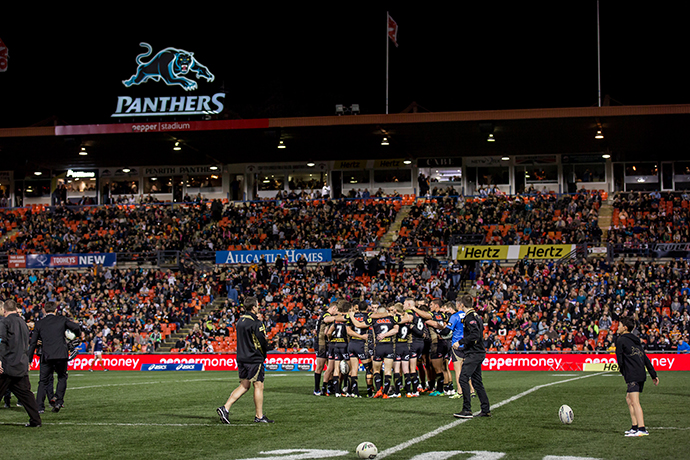
Early beginnings
The site of the current BlueBet Stadium between Mulgoa Road and Station Street has been home to the Panthers since their inaugural first grade season in 1967.
Owned by Penrith City Council, it was agreed the land would be the home of the Panthers after their acceptance into the 1967 competition was confirmed. It would require significant upgrades and development to be ready to host first grade rugby league.
The first home game at Penrith Park was held on April 8, 1967 between Penrith and Newtown.
In the lead-up to the game against Newtown, concerns had been raised about the standard of the surface, with talk that the sand-based field was not ready for play.
The Panthers beat the Jets 16-10 and Dave Applebee had the honour of scoring the first try in first grade at Penrith Park. Bob Landers kicked the first ever goal while Laurie Fagan landed the first field goal.
The crowd that day was 5,026.
Despite the game against the Jets, Penrith Park was ‘officially’ opened on April 23 1967 by Harold Matthews, the Vice President of the NSW Rugby League.
The playing surface was originally oval shaped, with just the western grandstand (with no roof!).
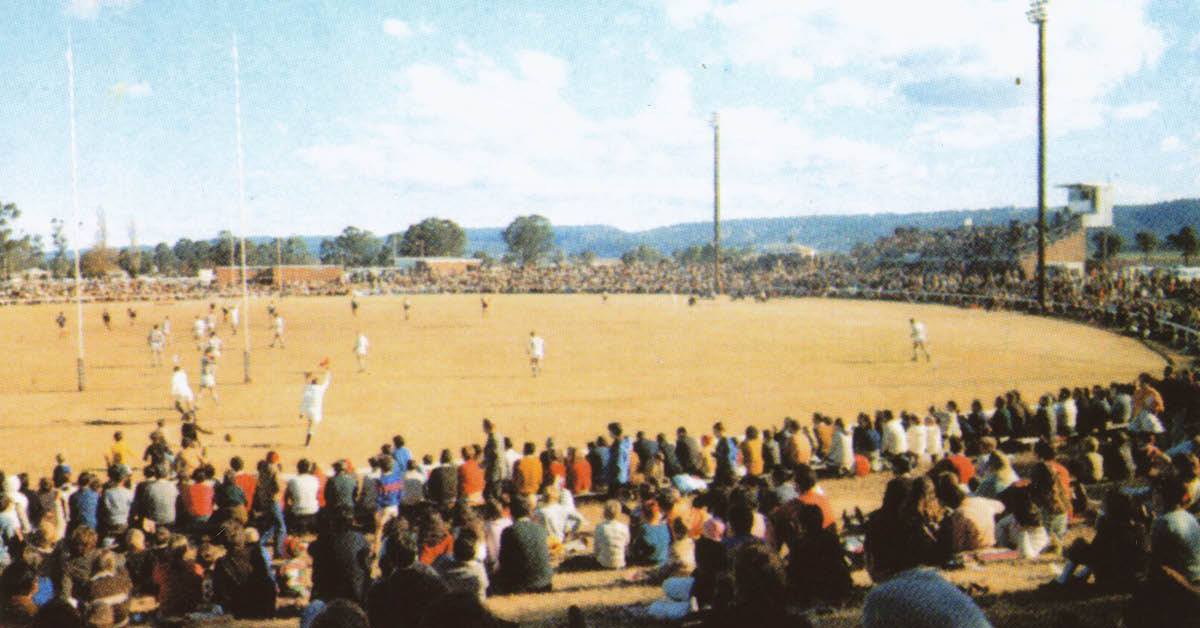
Redevelopment in the 1980s
The stadium faced significant redevelopment in the 1980s, becoming a rectangular ground better suited to rugby league.
The Eastern Grandstand was constructed, leaving the stadium with two hills at the northern and southern end, and two grandstands.
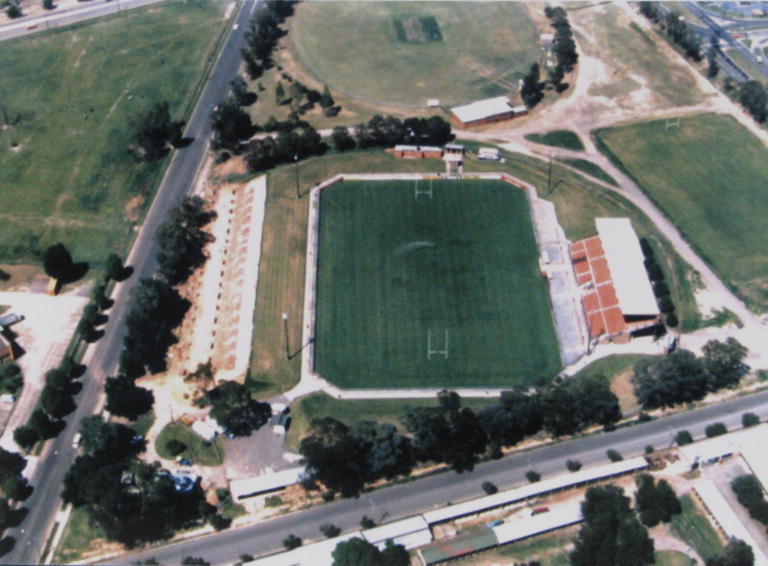
It had also become clear that the ground could be used for other sports, and Penrith City SC played at the venue as part of the National Soccer League in 1984-85.
Controversy surrounds Oils concert
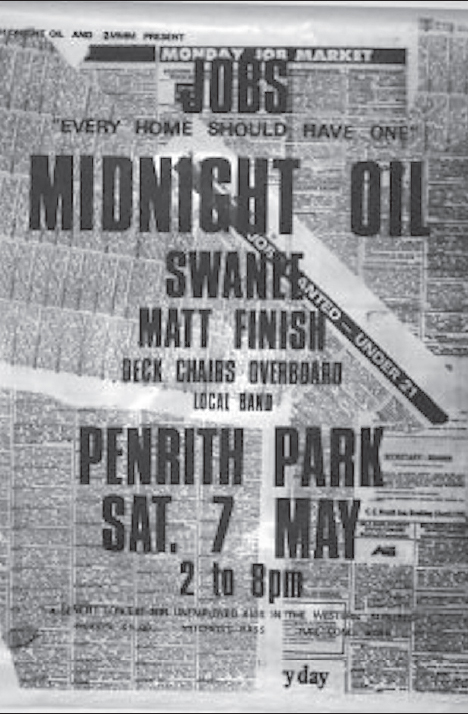
You would think popular band Midnight Oil coming to Penrith would be a huge coup for the city, but it turned into a controversial event back in 1983.
Midnight Oil appeared in concert at Penrith Park on May 7, 1983, with more than 18,000 people attending.
The night was promoted as a charity concert, called ‘Jobs: Every home should have one’.
Other acts on the bill included Swanee and Matt Finish, but in truth it was all about Midnight Oil.
Fans loved the show – but those in charge of Penrith Park were not so happy when they saw the aftermath.
Broken bottles and cans caused significant damage to the ground’s playing surface, as did the feet of the 18,000 people in attendance.
Given the concert was held in the middle of the football season, it was of significant concern to Panthers.
“We gave use of the ground because it was for charity and look what happens,” said football club CEO, Charlie Gibson at the time.
“We will be taking action to make sure no further concerts are held on the ground during the football season.”
The ground was a mess, with broken glass embedded in the ground and ring pulls from cans scattered all over the field.
Penrith was forced to move training while the ground was thoroughly checked by officials, who later gave it the all clear.
Organisers of the concert agreed to reimburse the football club for the cost of the repairs and clean-up.
“Unfortunately, it only takes a few people in the crowd to cause damage and make it difficult for everyone else,” Mr Gibson said.
Midnight Oil coming to Penrith may have been a huge event, but it left a scar on the city – with bad front page press in the following days and weeks.
A famous scoreboard
Any Panthers fan will tell you how much they loved the classic scoreboard that adorned the southern hill for several decades.
Plans lodged with Penrith City Council show the design of the scoreboard coming together in 1978. It would be installed soon after, and remain a fixture at the venue until 2013, when it was controversially dismantled and removed.
Design of the Penrith Park panther scoreboard from February 1978.
*imitates growling noise* pic.twitter.com/CdtJE5rLTx— Les Street (@official_lesdog) May 5, 2021
While the scoreboard had seen better days by the time it was removed in 2013, memories of it will never fade.
There was a time – when matches were often played at the same time – that it even provided an ‘around the grounds’ service, with score updates from other venues.

The scoreboard was eventually replaced with a second video screen, with screens now at both ends of the ground that also carry the score and clock.
Western Grandstand extended, new corporate facilities
The growing need for more corporate facilities at the stadium saw the opening of the Chairman’s Lounge in 2007.
It came as part of an upgrade to the Western Grandstand, with about $30 million spent on upgrades overall.
Notes for the upgrade say: Western Grandstand improvements, retention of existing stand superstructure, new corporate facilities (multi-function space), spectator facilities (additional seating, new amenities, new food & beverage outlets), player facilities (new dressing rooms, gymnasium, coach & referee boxes), media facilities, facilities for NRL administration, venue management facilities.
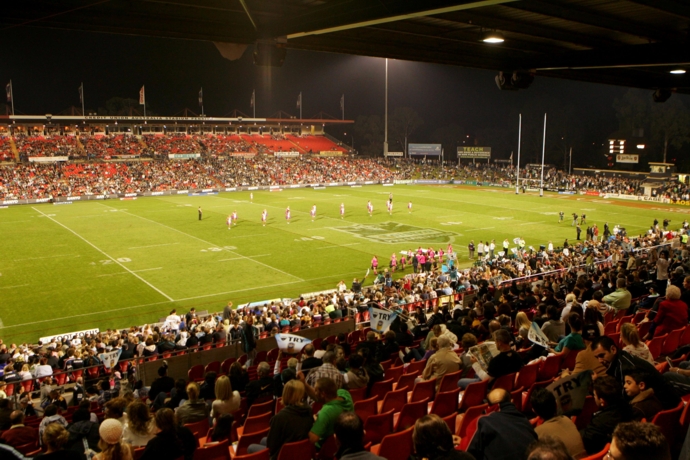
Plans for more upgrades were revealed in 2010, with proposals to build a double-sided grandstand that would have served both Howell Oval and the southern end of Penrith Park.
However, due to the need to relocate a sewer line – which was exceptionally cost prohibitive – the plans were abandoned. Facilities at the southern end were improved.
What’s in a name
Penrith Park has had many names over the years, partly as a result of tweaks to the branding and partly for commercial reasons.
It has been known as Penrith Football Stadium, Penrith Stadium and more recently Panthers Stadium.
But its main name changes have come as a result of sponsorship.
From 2006 until 2010, it was known as Credit Union Australia Stadium, or CUA Stadium.
In 2011, the venue become Centrebet Stadium before Sportingbet Stadium came along from 2014.
Finance group Pepper Group took over in 2015, with the venue named Pepper Stadium until the end of 2017 before the Panthers Stadium name was instigated for the 2018, 2019 and 2020 seasons.
In March 2021, BlueBet was announced as the stadium’s naming rights partner, signing a two-year deal.
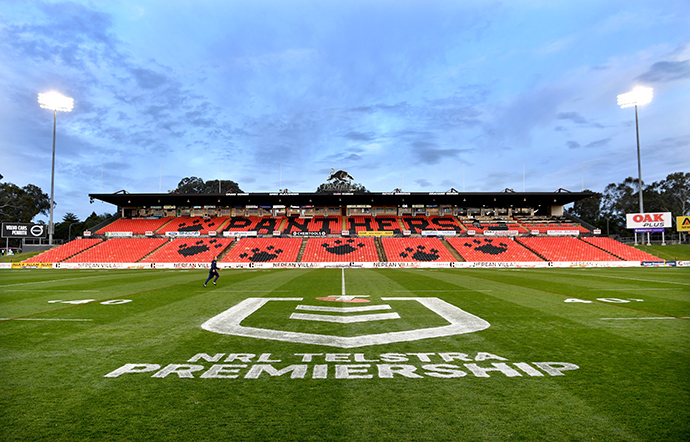
What the future holds
Penrith Park is set to undergo its biggest transformation in history after the 2022 NRL season.
Reports suggest that the State Government will fund a new boutique stadium with a seating capacity of between 25,000 and 30,000.
It means the existing stadium will be demolished, taking with it more than half a century of history.

Troy Dodds
Troy Dodds is the Weekender's Managing Editor and Breaking News Reporter. He has more than 20 years experience as a journalist, working with some of Australia's leading media organisations. In 2023, he was named Editor of the Year at the Mumbrella Publish Awards.
